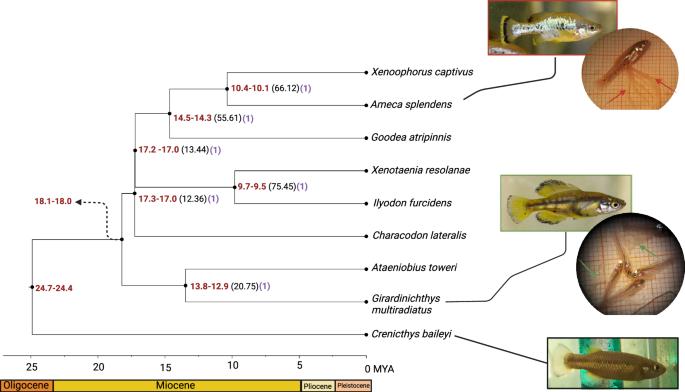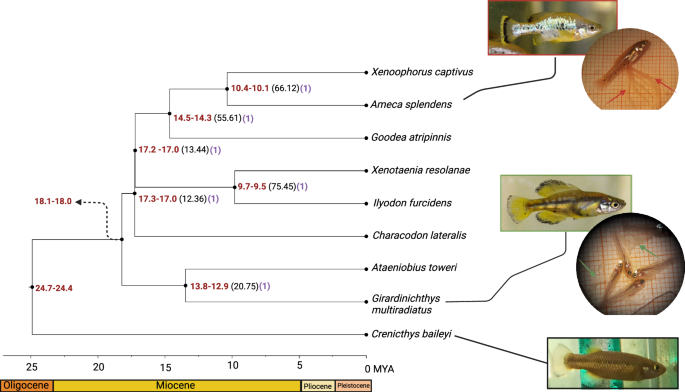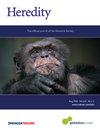墨西哥古德鱼辐射过程中基因流动和性状逆转的证据。
IF 3.9
2区 生物学
Q2 ECOLOGY
引用次数: 0
摘要
了解一个族群的系统地理历史并确定导致物种变异的因素是进化生物学中的一项重要挑战。古德伊纳科是墨西哥特有的活体鱼类。在这里,我们开发了古德伊纳科物种的基因组资源,并使用系统发生学方法来描述它们的进化历史。我们对四个古德氏鱼科物种的基因组进行了测序、组装和注释,其中包括Ataeniobius toweri。我们估算了物种分化的时间,并考察了物种间的引种范围和时间,以评估这是否可能发生在早期辐射期间,或发生在较近的二次接触中。我们使用了分支位点模型来检测古德伊纳亚科的全基因组正选择,并特别询问了最近发生胎盘胎生性丧失的 A. toweri 的正选择是否有所不同。我们发现了地理上孤立的物种之间基因流动的证据,这表明沧桑物种的分化得到了有限的分化后基因流动的补充,基因流动可能解释了以前古德伊亚科系统发育的不确定性。该类群中受到正选择的基因很可能与活体繁殖的转变有关。总之,我们的研究表明,火山作用驱动的沧海桑田和繁殖模式的变化都影响了古德伊纳科的辐射。本文章由计算机程序翻译,如有差异,请以英文原文为准。


Evidence for gene flow and trait reversal during radiation of Mexican Goodeid fish
Understanding the phylogeographic history of a group and identifying the factors contributing to speciation is an important challenge in evolutionary biology. The Goodeinae are a group of live-bearing fishes endemic to Mexico. Here, we develop genomic resources for species within the Goodeinae and use phylogenomic approaches to characterise their evolutionary history. We sequenced, assembled and annotated the genomes of four Goodeinae species, including Ataeniobius toweri, the only matrotrophic live-bearing fish without a trophotaenia in the group. We estimated timings of species divergence and examined the extent and timing of introgression between the species to assess if this may have occurred during an early radiation, or in more recent episodes of secondary contact. We used branch-site models to detect genome-wide positive selection across Goodeinae, and we specifically asked whether this differs in A. toweri, where loss of placental viviparity has recently occurred. We found evidence of gene flow between geographically isolated species, suggesting vicariant speciation was supplemented by limited post-speciation gene flow, and gene flow may explain previous uncertainties about Goodeid phylogeny. Genes under positive selection in the group are likely to be associated with the switch to live-bearing. Overall, our studies suggest that both volcanism-driven vicariance and changes in reproductive mode influenced radiation in the Goodeinae.
求助全文
通过发布文献求助,成功后即可免费获取论文全文。
去求助
来源期刊

Heredity
生物-进化生物学
CiteScore
7.50
自引率
2.60%
发文量
84
审稿时长
4-8 weeks
期刊介绍:
Heredity is the official journal of the Genetics Society. It covers a broad range of topics within the field of genetics and therefore papers must address conceptual or applied issues of interest to the journal''s wide readership
 求助内容:
求助内容: 应助结果提醒方式:
应助结果提醒方式:


